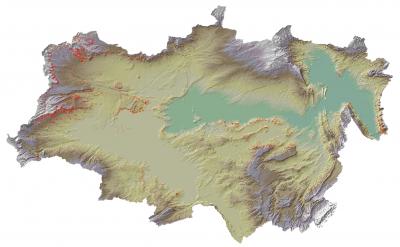Human, AI join forces to pinpoint fossil locations
November 22, 2011

This map shows sites (in red) in the Great Divide Basin with a 95 percent probability of containing fossils that also have slopes of greater than 5 percent (credit: Robert Anemone)
But thanks to a software model used by Conroy and researchers at fossil-hunters’ reliance on luck when finding fossils may be diminishing.
Using artificial neural networks (ANNs) — computer networks that imitate the workings of the human brain — Western Michigan University researchers have developed a computer model that can pinpoint productive fossil sites in the Great Divide Basin, a 4,000-square-mile stretch of rocky desert in Wyoming.
The software builds on satellite imagery and maps that fossil-hunters have used for years to locate the best fossil sites. The ANN was “trained” to use similar features of existing fossiliferous areas to accurately predict the locations of other fossil sites elsewhere in the Great Divide Basin.
The researchers tested the software at the Great Divide Basin last summer. The ANNs correctly identified 79 percent of the area’s known fossil sites, and 99 percent of the sites it tagged contained fossils. Next, they plan to continue to use the software to search for early hominid fossil sites in South Africa.
